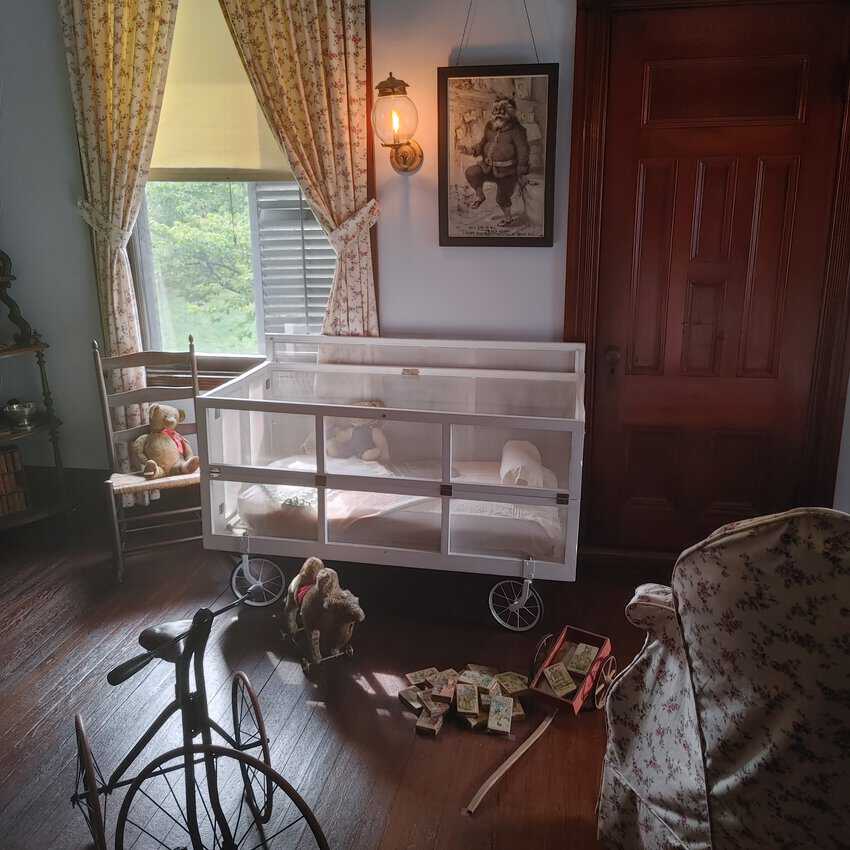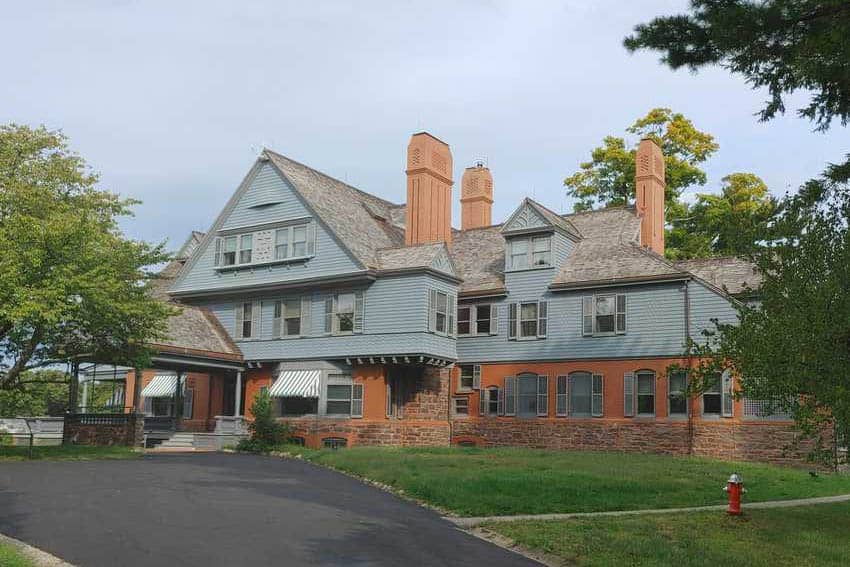
Teddy Roosevelt’s Famous Sagamore Hill, Long Island Home
By Dan Dubiel
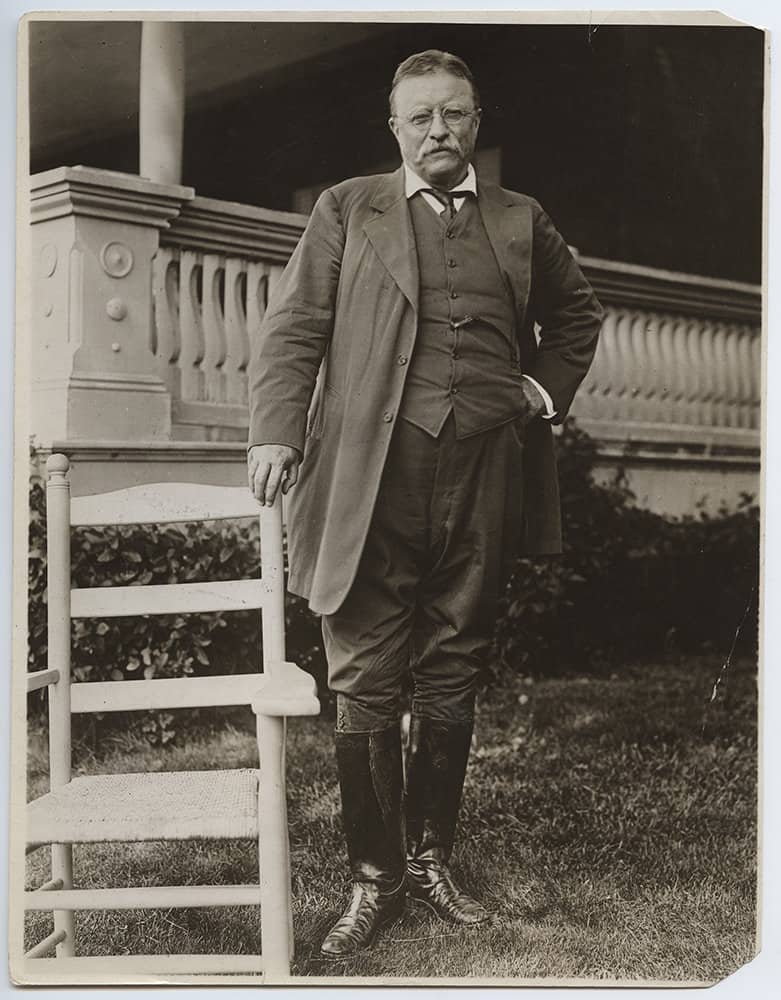
Sagamore Hill is a Queen Anne-style mansion built on eighty-three acres with twenty-three rooms and its own pumping station for water. If you want to visit, be sure to get there on time and reserve ahead!
President Theodore Roosevelt intended to name the home “Leeholm” after his first wife, Alice Hathaway Lee, but she died giving birth to their first child, Alice.
Roosevelt also lost his mother the same day. He left Alice with his sister and went out west to their family estate in North Dakota, putting the house on hold.
The large mansion is now a historic site and we wanted to join a tour, but found out about the limit–ten people–which forced us to wait for the next tour.
Driving the Long Island Expressway was like driving in any big city—lots of traffic and numerous slowdowns. I arrived at Sagamore Hill at 9:45 am, exactly two hours after leaving Piscataway New Jersey. If I were late, I would have been denied again.
It surprised me how rigid the Park Service was about the ten-person limit. We had three no-shows for our tour.
Three people tried to join us as walk-ins, but were told no. Our tour guide was very apologetic, but told us that the Park Service would not allow her to take walk-ins for any reason.
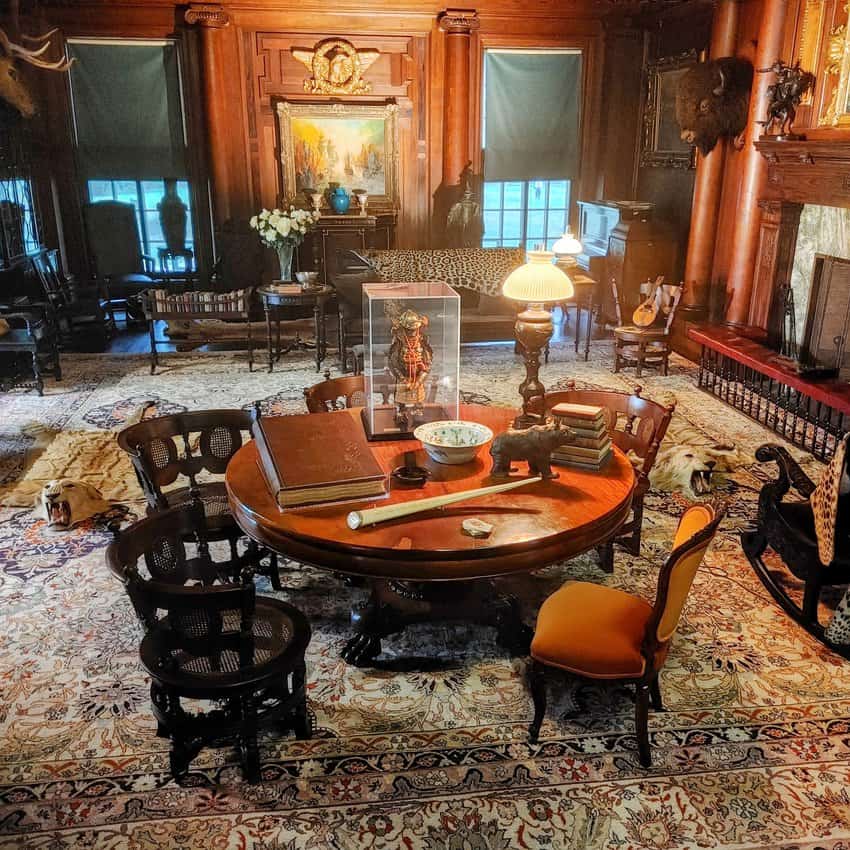
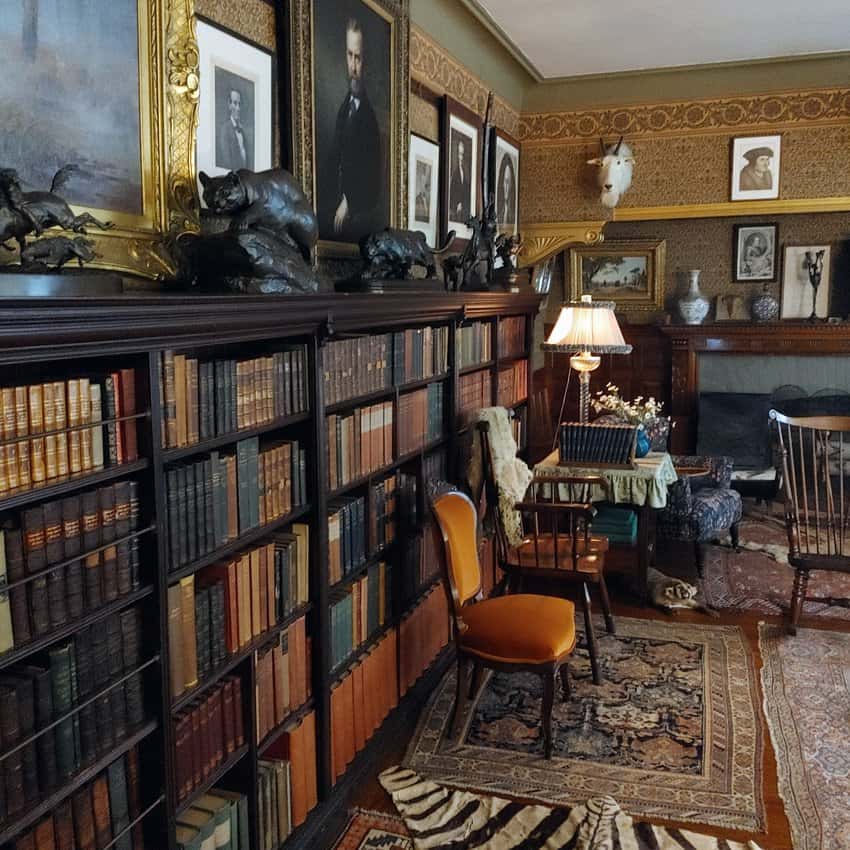
As I waited for my tour, I sat in a rocking chair on the porch. I imagined sitting in the same spot as Roosevelt, admiring the view. The only difference was today, I saw trees. In Teddy’s time, he would have a clear view of Oyster Bay.
Larger Than Life Theodore
Theodore Roosevelt, a larger-than-life character was flamboyant, outspoken, rambunctious, and extremely charismatic. I have long been an admirer of our 26th President. I named my dog Theodore because he has all the Roosevelt characteristics.
Summer White House
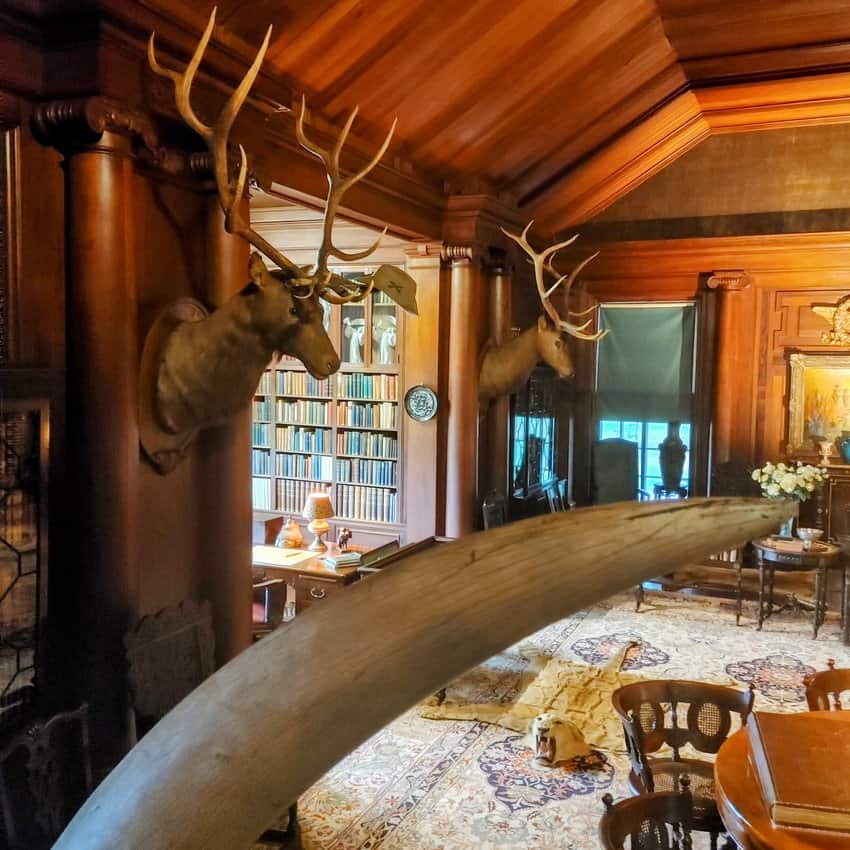
When Roosevelt was the president, he spent the summers of 1902-1908 in the home, earning it the nickname the “Summer White House.” It was the first time that presidential power would be exercised outside the White House.
When he resumed construction, he named the house Sagamore Hill after the Algonquin word for “chieftain.”
Hunting Trophies
They decorated each room with Roosevelt’s hunting trophies. The entryway was once a sitting room, but decorated with a Cape Buffalo head and two elephant tusks.
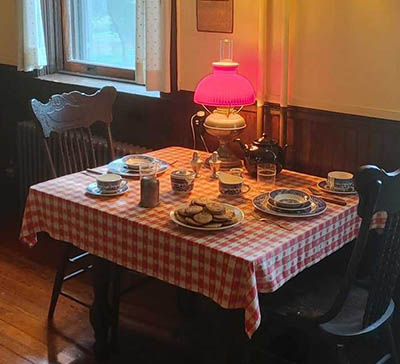
Both trophies are from his African hunting trip he took upon leaving the White House in 1909.
To the left of the entryway was Edith’s sewing room filled with family antiques. Teddy used it as a sitting room to greet guests.
Roosevelt decorated the floor with a large polar bear rug, a gift from Admiral Robert Perry after his 1909 North Pole expedition. White walls are accented with blue including the front door and the built-in bookcases.
Edith ran the family from this spot, including the finances. A notorious over-spender, Edith gave Teddy a daily allowance of twenty dollars. He often reported in at the end of the day, broke with no idea what he’d spent his money on.
The right of the entryway was the formal dining room. A rhinoceros bust, a gift from Roosevelt’s sister, fronts it. Edith often put gardening hats on it as a passive way of showing her disapproval.
Every member of the family was required to be dressed and ready for dinner. If they were late, they had to wait until they finished the meal and then eat at a private table in the kitchen.
Edith Roosevelt’s Table

Edith sat at the east end of the table to direct the family and staff. They fronted the fireplace with a screen that hid the pantry. The screen was a gift to Edith from the Empress of Japan. In 1887, Theodore and Edith purchased the dining room table in Italy while on their honeymoon.
Roosevelt loved to entertain. All of his parties included his children, which was unusual for the time. Expectations back then were children were to be seen, not heard. Not only were the children present, but they were required to be up to date on current events and culture.
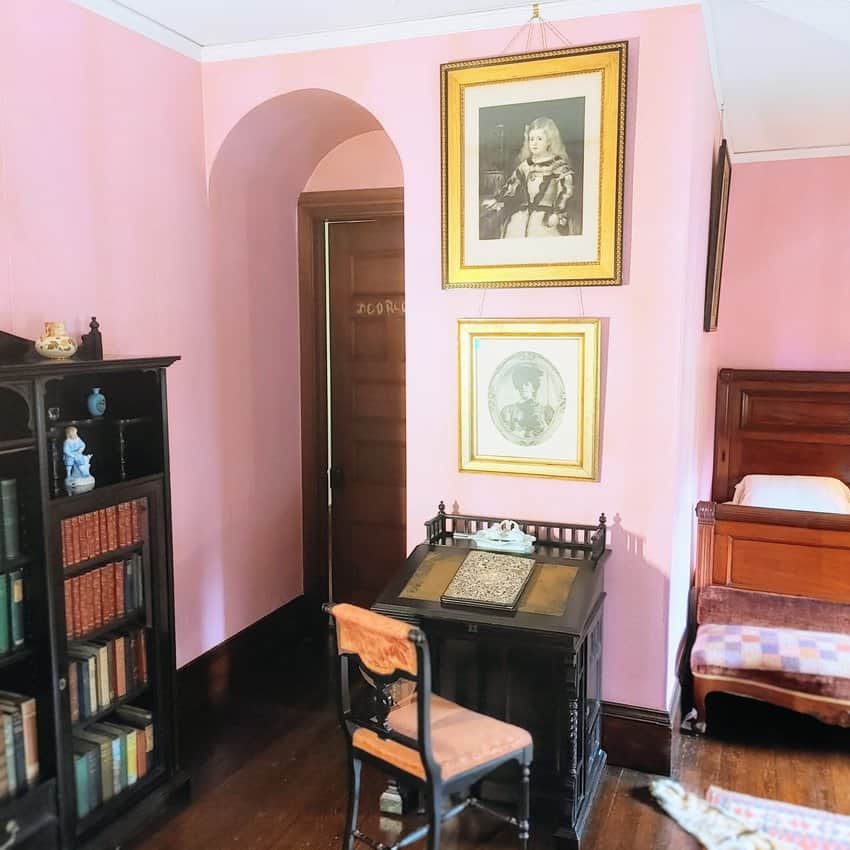
Roosevelt rarely intervened with his children. When the family moved into the White House, the staff nicknamed them “The White House Gang”.
They did things like used cookie sheets pilfered from the kitchen to ride down the staircases. They rode crashed their bikes into antiques. The staff regarded Theodore as the worst-behaved child of them all when he joined them at play.
Off the entry hall is the family library, where the family gathered. In the evenings Theodore and Edith read together. Daughter Ethel referred to it as “the heart of the home.”
Portraits of his Heroes
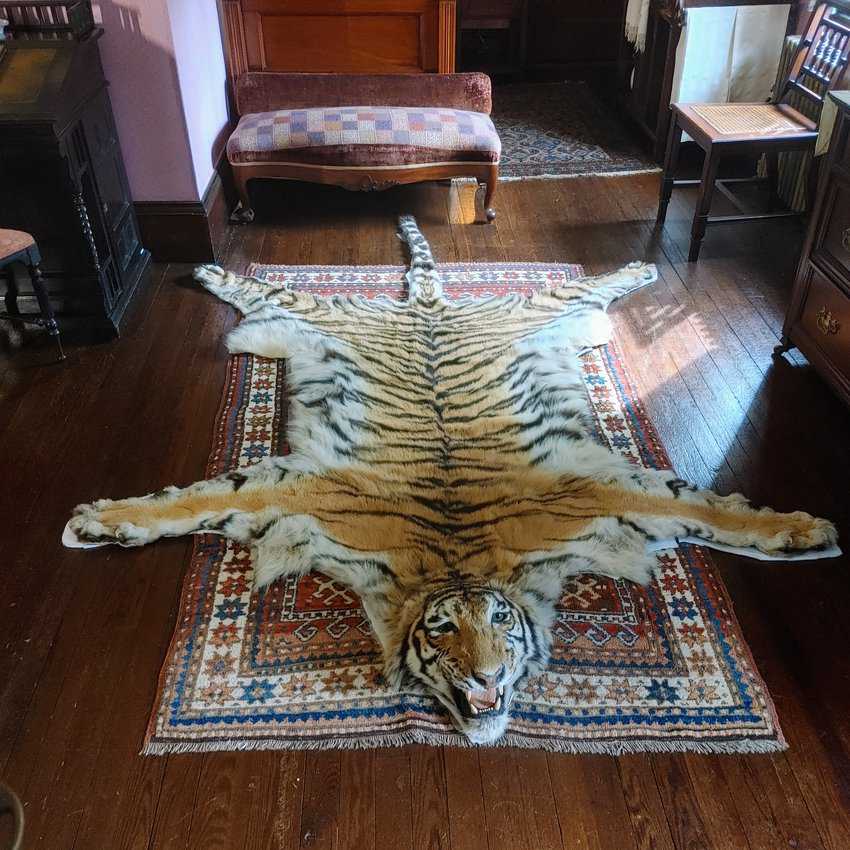 Roosevelt adorned the entry walls with portraits of his heroes. One is of his father, Theodore, Sr. who set up a gym in their Greenwich Village home for his weak asthmatic son.
Roosevelt adorned the entry walls with portraits of his heroes. One is of his father, Theodore, Sr. who set up a gym in their Greenwich Village home for his weak asthmatic son.
He taught his son a love of science and the outdoors. Other portraits include Ulysses S. Grant, John Marshall, George Washington and Abraham Lincoln.
They added the North Room of the mansion in 1905. It is the largest room in the house and is also known as the “trophy room.” It contains many gifts from foreign dignitaries, as well as his numerous hunting trophies.
He constructed the room because his wife Edith was tired of him taking over her knitting room.
The entry of the room contains a wooden railing in front of two giant ivory elephant tusks. The Emperor of Abyssinia (modern-day Ethiopia) gave them to Roosevelt.
To the left is a built-in bookcase. Next to that is an elk’s head topped with his cavalry hat and his saber from his service in Rough Riders during the Spanish-American War.
Looking to the right is a fireplace centering the room with a mantel housing a bust of a bronco rider. It was a gift from his Rough Riders.
Sultan of the Ottoman
On the floor is a large area rug, which was a gift from the Sultan of the Ottoman Empire.
In the center of the room is the table where Roosevelt negotiated the end of the Russo-Japanese War. A mini samurai warrior presented to him by Admiral Togo Heihachiro sits on the desk.
The second floor housed the nursing room, and later, children’s bedrooms. Each room is decorated as their kids kept them.
The Northwest Room was later the master known as Mother’s room. Their bedroom furniture was from his parent’s home. Adjoining the bedroom was a closet that was reserved for Teddy. It contains his riding outfit, boots and crop.

Alice, Teddy’s daughter from his first wife, had her own bedroom. One wall is adorned with two portraits of her mother who died giving birth to her and centered by a Bengal tiger rug. Another portrait called the “Spanish Princess” thought by many to be inspired by Alice herself. Alice was known to be wild like her father.
Edith clashed with Alice often. Theodore got daily briefings in the Oval Office from his wife of Alice’s behavior. One day Roosevelt snapped and told his wife, “I can be President of the United States or I control Alice. I cannot possibly do both.”
On the third floor, Theodore had a gun room with guns, a desk, a rhino inkwell, and a polar bear rug. The inkwell sat on his desk in the White House. The wall with a view of the front of the property had built-in book cases.
He did most of his own writing, but a stenographer had a desk with a typewriter opposite his to transcribe his notes.
The third floor housed the staff. He had as few as four and as many as nine staff who did a variety of jobs serving the family. Theodore, Junior was allowed to move up here and claim his own room when he turned sixteen. When he moved out, Archie moved in.
Hunting in Africa
Roosevelt left the White House in 1909. He spent the next couple of years hunting in Africa and visiting Europe. When he came home, he became angered at his handpicked successor William Howard Taft. Taft had been a longtime friend and served TR loyalty in a variety of jobs, but when Roosevelt announced he would not run for reelection, he told Taft that he was going to succeed him.
TR did all the campaigning and succeeded in winning Taft the election. Taft never wanted the job and proved that he wasn’t anywhere near as charismatic and likable. He reported in his journal that Teddy became cold to him as soon as Taft took over. He wrote that maybe TR had some regrets.
Roosevelt challenged him for the Republican nomination in 1912. When he didn’t get the nomination, he declared himself a third-party candidate on the Bull Moose Ticket. He lost the election to Democrat Woodrow Wilson.
In 1913, he took a journey to Brazil to explore an uncharted tributary on the Amazon River, The Rio da Davida (River of Doubt). He described the trip as “the last chance to be a boy.” At age fifty-five, feeling down after his election defeat, he received a letter from Argentina inviting him to conduct a lecture series in South America. He contacted the American Museum of Natural History in October and hired two naturalists to help him collect animal specimens during the trip.
After meeting with Brazilian explorer Colonel Candido Rondón, he changed his original plan and kicked off the journey in December. Twenty-three-year-old son Kermit joined the expedition. The trip was supposed to take two months. He had impressed the crew with his endless physical stamina.
They reached the River of Doubt by February 1914, but several of his men had been struck down by fever and half their pack animals had died from starvation, forcing Roosevelt to downsize his crew.
Switching to float canoes. Roosevelt documented the “torment of mosquitoes and biting flies.” A few days into this leg of the journey, Roosevelt narrowly averted a bite from a venomous coral snake. The bite failed to penetrate his boots.
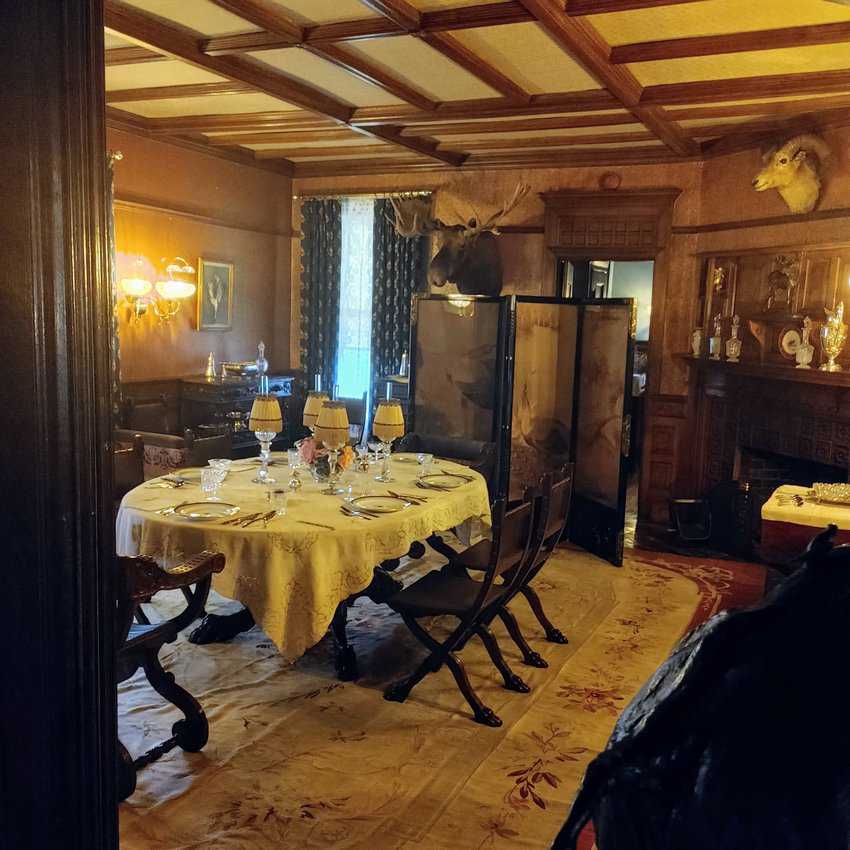
Plagued by Dysentery
The next several weeks of the journey were plagued by dysentery, malaria, and dwindling supplies. Roosevelt was felled by fever and begged to be left behind. In the end, Roosevelt lost twenty-five percent of his body weight and required emergency surgery on an infection in his leg from an earlier cut.
The team had successfully mapped over a thousand miles of tributaries that were named the Rio Teodoro in his honor. Roosevelt was in good spirits, referring to his injuries as the “Brazilian ailments” but his health was never the same.
Losing his Son Quentin
In the summer of 1918, his son Quentin, a pilot, was killed in France, casting a deep depression upon the former president. He was in his bed in the master bedroom when he died on January 6, 1919. He experienced breathing problems while reading a magazine. The cause of death was listed as a pulmonary embolism.
He was buried at Young Memorial Cemetery, overlooking Oyster Bay, downhill about a mile from Sagamore Hill. The Roosevelts purchased burial plots for Theodore and Edith from the Young family. Edith was buried by his side upon her death in 1948.
Find out more about visiting Sagamore Hill at the National Parks Service website. Be sure to reserve far ahead and don’t be late. The Theodore Roosevelt Presidential Library is currently being planned and built in North Dakota, to be completed in 2024.
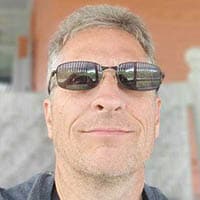
- Fall Clothing for Your Travels - August 30, 2024
- Mekong Chronicles: The River That Shaped Southeast Asia - August 28, 2024
- Gadgets and Goodies You Might Enjoy - August 27, 2024

